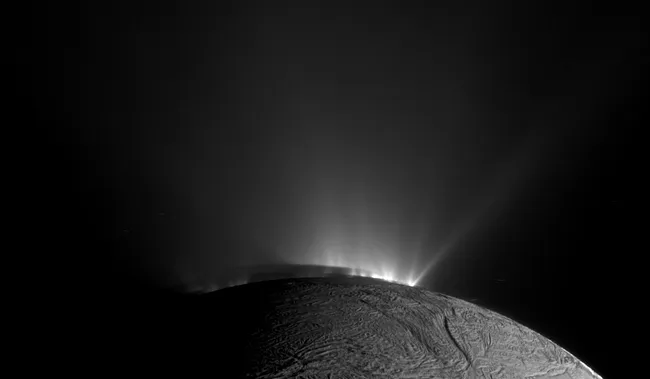
On November 30, 2010, NASA’s Cassini spacecraft captured a breathtaking image of Saturn’s icy moon Enceladus, showing jets of water vapor erupting from cracks near its south pole. These geysers are fueled by a vast subsurface ocean, hidden beneath the frozen surface, and they continue to amaze scientists with new secrets.
Although Enceladus is only 314 miles (505 km) wide—small enough to fit inside the U.S. state of Colorado—it holds remarkable potential for extraterrestrial life. With liquid water, hydrothermal activity, and a rich chemical mix, it checks many boxes scientists look for when searching for habitable worlds.
Two decades ago, Cassini revealed that this underground ocean was spewing tiny ice grains into space, forming Saturn’s faint E ring. Subsequent studies of these grains identified five of the six essential elements for life: carbon, hydrogen, nitrogen, oxygen, and phosphorus—leaving sulfur as the only missing piece.
Until recently, most findings came from “older” grains in Saturn’s E ring, leaving some doubt about whether the molecules were native to Enceladus or altered by space weathering. Now, fresh evidence has emerged. In a new study published in Nature Astronomy (Oct. 1), scientists have confirmed the presence of organic molecules—possibly containing nitrogen and oxygen—directly in freshly ejected ice grains.
This breakthrough came from Cassini’s daring flyby in 2008, when it shot through a geyser at an incredible 11 miles per second (18 km/s). At that speed, water molecules could not clump together, allowing Cassini’s Cosmic Dust Analyzer to detect faint signals that had remained hidden before. Using mass spectrometry, researchers uncovered chemical fingerprints resembling compounds on Earth that play a role in the formation of complex, life-related molecules.
The discovery suggests that Enceladus is far from a frozen, lifeless world. Instead, it may harbor a dynamic ocean system enriched with the building blocks of life, raising one of the most profound questions in science: could this tiny icy moon, orbiting far beyond Earth’s “Goldilocks zone,” be home to alien life?
